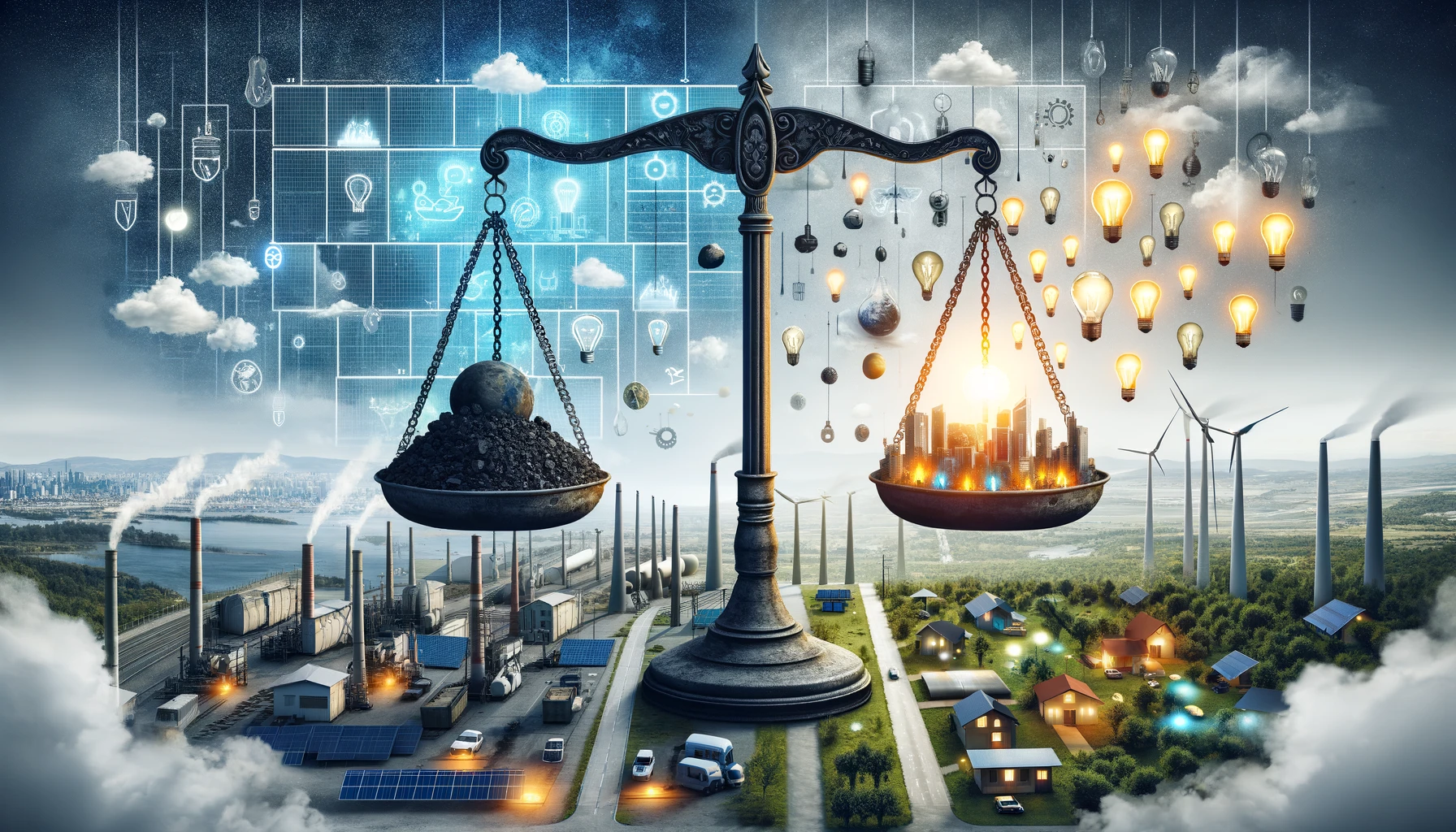
Sign up for daily news updates from CleanTechnica on email. Or follow us on Google News!
Over the past year or so, energy return on energy invested (EREOI) has shown up multiple times for me as an attack on technologies are now superior. A nuclear shipping advocate tried to gotcha me with that for biofuels for shipping. Others reasonably asked about it for biofuels in general. And there’s a lot of disinformation floating around about fossil fuels vs renewables, being spread by the fossil fuel industry.
It’s time for some disambiguation.
Let’s start with what EREOI is. Pretty simple, actually. It takes energy to get energy into a form usable by us, whether that’s extracting and refining oil or building a wind turbine. The ratio between the energy you get out versus the energy you put in is the EREOI. And to be clear, it’s over the lifetime of the production from the asset, whether it’s an oil well, a hydroelectric dam or a wind turbine.
Agriculture makes energy in the form of calories which we consume. The agricultural revolution 10,000 years ago resulted in a more positive EREOI than hunting and gathering, so civilization arose. A positive EREOI is pretty good for us. The Green Revolution doubled EREOI to about 4:1, so now we have a lot more food for a lot less work. In fact, we make so much food these days that we throw away a third of it globally, about 2.5 billion tons, something which is a major climate headache because waste food ends up emitting a lot of methane which is a lot worse for global warming than carbon dioxide.
It used to be that oil had really good EREOI, from 18-43:1. When it just bubbles out of the ground, all you have to do is cap it. Conventional gas was good as well, from 20-40:1. Stick a metal straw in the ground and cheap gas came out. Coal has an EREOI in the 40s as well.
That’s a big reason why the Industrial Revolution occurred, because there was an awful lot of cheap, easily extracted fossil fuels lying about the place. What’s that? Cheap, easily extracted fossil fuels aren’t as readily available as they once were? We’re using unconventional extraction techniques like shale fracturing for oil and gas, and steam assisted gravity drainage (SAGD) for oil sands crude. Those techniques use a lot more energy. What does that do to their EREOI?
Well, shale oil’s EREOI plummets to 1-2:1, below antiquated agriculture. Oil sands SAGD plummets to 3.5-5.4:1, about the same as modern agriculture. Fracked gas has an EREOI of 5-10:1. Coal remains high, mostly because we’ve stopped mining for it and started just disassembling mountains from the top down with heavy machinery.
There’s a game the fossil fuel industry likes to play with unconventional fossil fuel extraction to pretend the EREOI is higher, by the way. What they do is use lots of the fossil fuels that they are extracting to power the process of extracting fossil fuels. This, of course, is completely unabated meaning much higher greenhouse gas emissions, and it’s a fallacious economic argument because they are clearly paying the opportunity cost of not selling the fuels. Burning the house down to heat it isn’t exactly wise, and they are doing that in two different ways.
And then there’s the problem of oil and gas well lifetimes. Natural ones have long lifetimes with low annual percentage drops, but shale and fracked wells for oil and gas see declines of 15% to 20% per year. That can substantially throw off EREOI calculations.
To be clear, there’s also something called the energy cliff. Below an EREOI of about five, the cost per unit of energy starts shooting upward making a lot of once economic things deeply uneconomic from a systemic perspective. Yes, shale oil and the oil sands are in the zone of economic doom. And the converse is worth considering. Above about 5:1, returns are marginal. The difference between an EREOI of 10:1 and 40:1 is only about 7% more benefit. Big numbers don’t matter as much as being above the 80% mark, or 5:1.
As we’ve seen above, there are multiple ways to play with EREOI to get the results you want. A classic one for the fossil fuel industry is to ignore unconventional oil and gas, which are pretty much every marginal barrel and gigajoule of oil and use only legacy oil. But we are increasingly using unconventional techniques because a lot of the high-EREOI wells have dried up and that’s continuing every year.
That’s why we are drilling in the Arctic, under the North Sea and deeper than ever. The same technical innovation that has made Hubbert’s Peak Oil Supply merely a frightening story before bed has also decreased the EREOI of every marginal unit of energy we extract now.
And then they like to ignore the more rapid declines of fracked wells too, pretending that they are going to last longer, spreading there initial fracking energy over vastly more barrels or gigajoules. Yeah, not so fast.
And then the same types, for example Goehring & Rozencwajg Associates, LLC, a hardcore fossil fuels investment firm which likes to refer to itself as contrarian, spread massive disinformation about renewables.
So lets talk about wind, water and solar.
Hydroelectric, because dams last so long, have the best EREOI’s going, often over 100:1. Can’t beat a good dam, but you also can’t build one with solely private money. The USA’s biggest ones were all built by the federal government during the New Deals and are still owned and operated by it through the Bureau of Land Management. China’s Three Gorges Dam and the dam in Nepal they are building that dwarfs it, as well as the smaller dams they have built over the past 20 years, are all national projects, not entrepreneur’s projects. When an asset is expected to have a lifetime over 100 years, it’s hard to get pure markets interested in it.
There are a couple of easy ways to game renewables’ generation down, and disinformation vendors like GRA use every one they can. Let’s start with wind energy. Let’s pick wind energy from the 1990s or 2000s instead of modern wind farms that are much bigger and have much better capacity factors. Let’s pretend that wind farms don’t last as long as they do. Play those silly games and pretty soon you have crappy EREOI’s for wind energy.
What’s the modern reality? 19-20:1. Hmmm. Isn’t that a long, long way above all unconventional fossil fuels? I mean, a really long way? And a really long way above any concerns about humanity falling off of a cliff?
What’s another silly game that the industry likes to play? How about pretending that a barrel of oil’s 1,700 kWh of heat energy is equal to 1,700 kWh from a wind turbine? Are they? Not a chance.
Let’s take an internal combustion car versus an electric car. Let’s take 1,700 kWh worth of petroleum out of the ground and get the energy to the wheels of the car. How efficient is that process? About 20%. About 80% of the energy gets thrown away, mostly as waste heat along the way, although clearly a lot of energy gets thrown away for unconventional gas and oil long before it gets to a car.
Meanwhile, let’s go wind turbine to an electric car’s wheels. How efficient is that process? About 80%. Waste heat again in the form of moving through wires and in and out of the battery, but still, four times more efficient than well to wheel.
How about gas well to gas furnace? That’s pretty good, after the gas is extracted. It’s a pretty easy molecule to put through pipelines and modern furnaces are pretty good. Well to heat efficiency is about 70% on average, much better than if you were trying to get work out of it.
But what about solar panels to heat pumps? Solar EREOI is 10:1 and sharp eyes will note the non-coincidence that the ratio between solar capacity factors and wind capacity factors is about the same as EREOI to EREOI for the forms. One of the games the fossil fuel industry likes to play is using rooftop solar EREOI, 5-6:1 instead of solar farms higher EREOI. Apples to apples is worth remembering and looking for.
Transmitting and distributing electricity is even more efficient than natural gas, about 5% losses from solar farm to heat pump vs 7% of well to furnace. But heat pumps get an average of three units of energy of heat out of the environment for every unit of energy you get into them. That means with the relative efficiencies, you get four times as much heat from electricity from solar panels as you do gas from a well.
GRA and others use the primary energy fallacy, that heat energy is equal to electricity, when you can get vastly more work out of the same amount of electricity, to make renewables look bad and fossil fuels look good. And of course they ignore heat pumps entirely.
An electrified world powered by renewables is a vastly more efficient world. I replicated something that many have done, just because I like to run the numbers myself. The USA, as an example where the data is available and well explained enough to work with, would require about 50% as much primary energy in the form of low-carbon wind, water, solar (mostly) and nuclear and geothermal, as they pump into the system today, if they were fully electrified.
The doom and gloom degrowth crowd tend not to like these types of analyses either, although some realize that when we stop extracting almost 20 billion tons of fossil fuels to mostly burn every year, that is actually a massive economic shift. The rural agrarian fantasists certainly don’t like it.
But the fossil fuel industry just hates the reality of this. What it makes clear is that the transition is much easier than they are pretending. It makes clear that the developing world can leapfrog a lot of the high-inefficiency energy flows that the developed world went through, and the developing world is, with lots of electric vehicles and renewables springing up around the world.
Did you know two and three wheeled electric vehicles have avoided more barrels of oil than all of the rest of the electric vehicles in the world combined? That’s what BNEF reported last year. Where are those small electric vehicles? Well, lots and lots of them are in the developing world, where cars are much less common.
As for bioefuls? Well, meta-analyses of a bunch of biofuels projects find that they have an EREOI below agriculture’s 4:1, but above 3:1. That makes sense. Creating biofuels requires mostly really old technologies like fermentation and distillation. The EREOI isn’t great, but it’s good enough as long as we preserve it for places where it’s really needed, like long haul shipping and aviation. We’ll use battery and grid tied electric for the rest of transportation.
But what about synthetic fuels made with green hydrogen? Well, we’re taking electricity with is really efficient at doing work or absurdly efficient at delivering heat through heat pumps and instead throwing vast amounts of it away to make consumable fuels which run through internal combustion engines that operate at 20% efficiency with high EREOI fossil fuels. We’re well under biofuels, and a long way under where considering the merit order of what else we could be doing with green electricity.
It’s pretty easy for people who should otherwise know better to be caught by this. The fossil fuel industry has had decades to figure out how to fool people with this stuff. Very bright, well educated and well meaning people who don’t spend much time look at renewables, transmission, storage and electrification are easily fooled into thinking that the industry’s disinformation is credible.
The reason I was triggered to dash off this article was because one of those people was ensnared by the bad arguments and amplified them today. Don’t be that person.
Have a tip for CleanTechnica? Want to advertise? Want to suggest a guest for our CleanTech Talk podcast? Contact us here.
Latest CleanTechnica TV Video
[embedded content]
I don’t like paywalls. You don’t like paywalls. Who likes paywalls? Here at CleanTechnica, we implemented a limited paywall for a while, but it always felt wrong — and it was always tough to decide what we should put behind there. In theory, your most exclusive and best content goes behind a paywall. But then fewer people read it!! So, we’ve decided to completely nix paywalls here at CleanTechnica. But…
Thank you!
Advertisement
CleanTechnica uses affiliate links. See our policy here.
- SEO Powered Content & PR Distribution. Get Amplified Today.
- PlatoData.Network Vertical Generative Ai. Empower Yourself. Access Here.
- PlatoAiStream. Web3 Intelligence. Knowledge Amplified. Access Here.
- PlatoESG. Carbon, CleanTech, Energy, Environment, Solar, Waste Management. Access Here.
- PlatoHealth. Biotech and Clinical Trials Intelligence. Access Here.
- Source: https://cleantechnica.com/2024/02/02/energy-return-on-investment-rears-its-misshapen-head-again/
- :has
- :is
- :not
- :where
- $UP
- 000
- 1
- 10
- 100
- 15%
- 2%
- 20
- 20 years
- 2000s
- 36
- 4
- 40
- 5
- 52
- 700
- a
- About
- about IT
- above
- actually
- Advertise
- advocate
- Affiliate
- After
- again
- ago
- Agricultural
- agriculture
- All
- almost
- along
- also
- Although
- always
- amount
- amounts
- Amplified
- an
- analyses
- and
- annual
- Another
- any
- arctic
- ARE
- argument
- arguments
- around
- article
- AS
- asked
- asset
- assisted
- associates
- At
- attack
- available
- average
- aviation
- avoided
- away
- Bad
- barrels
- battery
- BE
- beat
- because
- before
- behind
- being
- below
- benefit
- BEST
- Better
- between
- Big
- bigger
- Biggest
- Billion
- Bit
- Bright
- build
- Building
- built
- Bunch
- Bureau
- burn
- burning
- but
- by
- calculations
- called
- came
- CAN
- Can Get
- cap
- Capacity
- car
- carbon
- carbon dioxide
- cars
- caught
- certainly
- Chance
- cheap
- Chinas
- chip
- classic
- cleantech
- Cleantech Talk
- clear
- clearly
- Climate
- Coal
- combined
- Common
- Companies
- completely
- Concerns
- considering
- consume
- content
- continuing
- conventional
- Cost
- could
- Couple
- course
- Creating
- credible
- crowd
- crude
- Dash
- data
- Days
- Deals
- decades
- decide
- decided
- Declines
- decreased
- deeper
- deeply
- delivering
- developed
- developing
- developing world
- difference
- different
- disinformation
- distributing
- do
- does
- doing
- don
- done
- Dont
- doom
- doubled
- down
- Drops
- during
- easier
- easily
- easy
- Economic
- efficiencies
- efficiency
- efficient
- either
- Electric
- electric car
- electric vehicles
- electricity
- electrification
- else
- embedded
- Emissions
- ends
- energy
- Engines
- enough
- entirely
- Environment
- equal
- Ether (ETH)
- Even
- EVER
- Every
- exactly
- example
- Exclusive
- expected
- explained
- extract
- extraction
- Eyes
- fact
- factors
- Falling
- farm
- Farms
- FAST
- Federal
- Federal government
- felt
- fewer
- Figure
- Find
- Firm
- five
- floating
- Flows
- food
- For
- form
- forms
- fossil
- Fossil fuel
- fossil fuels
- four
- fracturing
- from
- Fuel
- fuels
- fully
- game
- Games
- GAS
- gathering
- General
- generation
- get
- gets
- Global
- global warming
- Globally
- Go
- Goes
- going
- good
- Government
- gravity
- great
- Green
- greenhouse gas
- Greenhouse gas emissions
- Grid
- Ground
- Guest
- had
- Hard
- hardcore
- hates
- Have
- head
- heavy
- help
- here
- High
- higher
- House
- How
- How To
- HTTPS
- Humanity
- Hunting
- hydrogen
- i
- if
- ignore
- implemented
- in
- increasingly
- industrial
- Industrial Revolution
- industry
- industry’s
- initial
- Innovation
- instead
- interested
- internal
- into
- invested
- investment
- IT
- ITS
- itself
- just
- Know
- Land
- Last
- Last Year
- Legacy
- less
- Lets
- lifetime
- like
- likes
- Limited
- links
- LLC
- Long
- longer
- Look
- looking
- losses
- Lot
- lots
- Low
- low-carbon
- machinery
- made
- major
- make
- MAKES
- Making
- management
- many
- marginal
- mark
- Markets
- massive
- Matter
- me
- mean
- meaning
- means
- Media
- merely
- Merit
- metal
- methane
- Mining
- Modern
- molecule
- money
- more
- more efficient
- most
- mostly
- moving
- much
- multiple
- myself
- National
- Natural
- Natural Gas
- Need
- needed
- New
- new deals
- news
- North
- North Sea
- note
- now
- nuclear
- numbers
- occurred
- of
- off
- often
- Oil
- Oil and Gas
- Old
- on
- once
- ONE
- ones
- only
- operate
- operated
- Opportunity
- or
- order
- Other
- Others
- otherwise
- our
- out
- over
- owned
- panels
- past
- paying
- Peak
- People
- per
- percentage
- person
- perspective
- Petroleum
- pick
- Place
- Places
- plato
- Plato Data Intelligence
- PlatoData
- Play
- player
- plummets
- podcast
- policy
- positive
- power
- powered
- pretty
- pretty simple
- primary
- private
- Problem
- process
- Production
- projects
- publish
- pump
- pumps
- pure
- put
- rapid
- ratio
- Read
- Reader
- readily
- Reality
- realize
- really
- reason
- refer
- refining
- relative
- remains
- remembering
- Renewables
- replicated
- Reported
- require
- requires
- REST
- resulted
- Results
- return
- returns
- Revolution
- Run
- Rural
- same
- SEA
- see
- seen
- Selling
- sense
- Shale
- sharp
- shift
- Shipping
- shooting
- should
- shown
- Simple
- small
- smaller
- So
- solar
- solar panels
- solely
- some
- something
- Soon
- spend
- spread
- Spreading
- start
- started
- starts
- Steam
- Stick
- Still
- Stop
- stopped
- storage
- Stories
- Story
- stuff
- substantially
- suggest
- superior
- supply
- support
- synthetic
- system
- systemic
- T
- Take
- takes
- taking
- Talk
- team
- Technical
- techniques
- Technologies
- tend
- than
- that
- The
- the world
- their
- Them
- then
- theory
- There.
- These
- they
- things
- Thinking
- Third
- this
- those
- three
- Through
- throw
- Throwing
- Tied
- time
- times
- tip
- to
- today
- tons
- too
- top
- tough
- transition
- transportation
- tried
- triggered
- trying
- turbine
- tv
- two
- types
- unconventional
- under
- unit
- units
- Updates
- upward
- us
- USA
- usable
- use
- used
- uses
- using
- Vast
- Ve
- Vehicles
- vendors
- Versus
- very
- Video
- vs
- want
- was
- Waste
- Water
- Way..
- ways
- we
- webp
- WELL
- Wells
- went
- were
- What
- Wheel
- when
- whether
- which
- while
- WHO
- why
- will
- wind
- wind energy
- wind farms
- wind turbine
- WISE
- with
- Work
- work out
- world
- worse
- worth
- would
- write
- Wrong
- year
- years
- yes
- you
- Your
- youtube
- zephyrnet
- zone






